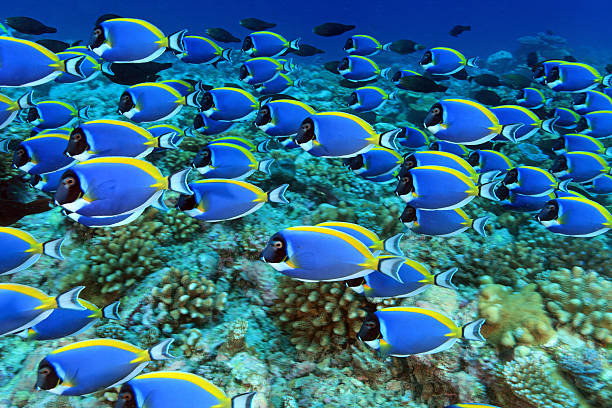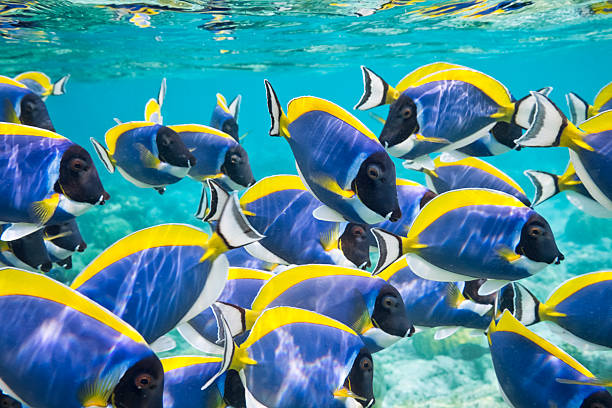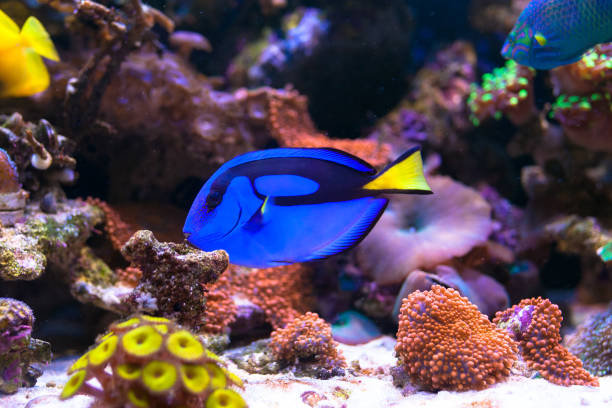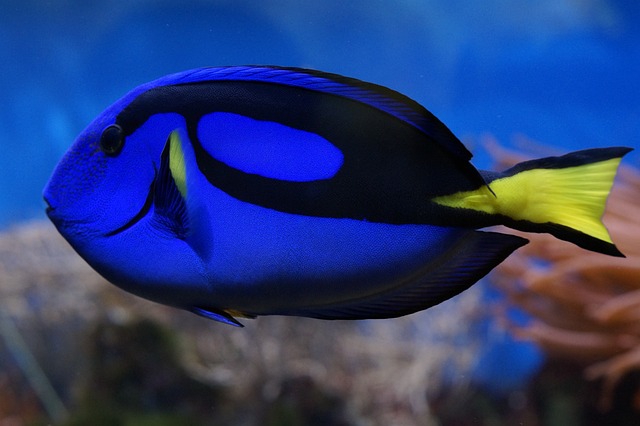The Amazing Powder blue surgeonfish of Maldives
The Maldives is home to some of the most beautiful marine life in the world, including The Powder blue surgeonfish. These stunning creatures are a sight to behold and can be seen amongst the coral reefs in the area. They have an unmistakable powder blue color that makes them easily recognizable and stands out from other species of fish in the region. While these powder blue beauties are a pleasure to observe, there is much more to learn about them! This blog post will dive into the amazing characteristics and behaviors of the Powder blue surgeonfish of Maldives.
What makes the powder blue surgeonfish so special?
The powder blue surgeonfish (Acanthurus leucosternon) is a special species of saltwater fish that many consider a hidden gem among experienced aquarium owners. The powder blue surgeonfish is native to the Indo-Pacific Ocean and has striking characteristics that make this fish one of the most unique species of saltwater fish available.
The unmistakable features of the powder blue surgeonfish are its bright powder blue and greyish color pattern, making it a popular choice for aquarists and reef tank owners. The blue coloration is prominent on its face but extends to its tail fins. In addition to its impressive color pattern, the powder blue surgeonfish has sharp spine-like structures on either side of its tail that are colored silver. This spine-like structure is known as a ‘scalpel’ and is used for protection against possible predators.

Where can you find them?
The powder blue surgeonfish can be found in a variety of habitats including coral-fringed lagoons, reef flats and back reefs, bilge areas, patch reefs, and coastal lagoons. They inhabit both shallow and deeper waters, but the deeper settings tend to be preferred. The fishes are primarily seen in small schools of five to ten members, but larger groups of 30 or more are not unusual. Females are generally smaller than their male counterparts and their bodies tend to be more compressed.
The powder blue surgeonfish feeds mainly on filamentous and benthic algae located in the coral or surrounding substrate. It can also be found foraging for small invertebrates like crustaceans, mollusks, and brittle stars. Since the species is generally found in deeper waters, it is challenging to observe when it is foraging, as the fish will dive deeper if it sensed a disturbance.
What do they eat?
Being a part of the family of surgeonfishes, the powder blue surgeonfish, like many of its relatives, is an herbivorous species. It feeds mainly on algae, benthic diatoms, and plankton, including copepods and foraminiferans. Additionally, it may feed on the occasional gammarid amphipod and juvenile worm. On the reef, it is typically observed grazing on the various epiphytic and fouling algae. The powder blue surgeonfish performs a sort of “cleaning service,” consuming the unhealthy and dying algae off the coral to promote its growth.

In the wild, it is possible to observe the powder blue surgeonfish feeding on an array of array seagrasses and seaweed species. These include species like Ulva, Sargassum, and Halimeda. It can consume these macroalgae due to its powerful teeth and jaws, which are strong enough to break apart the rigid material of its cell walls. In aquarium settings, powder blue surgeonfish may also be seen eating common aquarium items such as pellets, flakes, dried seaweed, and frozen formula foods.
How can you help protect them?
The first step for protecting the powder blue surgeonfish is awareness. Raising public awareness of the plight of this species is paramount to its conservation. Members of the public can be engaged through various media campaigns such as blogs, podcasts, TV, radio, movies, and leaflets.
They may focus on how pollutants, climate change, and overfishing are taking a toll on the fish population. People should understand how interconnected the health of coral reefs and their inhabitants is. Conservation organizations can work to support the protection of this species by leading field research and by setting up conservation areas dedicated to the powder blue surgeonfish.
Are blue surgeonfish poisonous?
Unlike other poisonous reef fish, there is no toxic substance found in a blue surgeonfish that would cause any harm to a person. This is because the blue surgeonfish eats an herbivorous diet of plankton and small plants, which means it has not had the opportunity to develop poisonous capabilities like other fish. Furthermore, the blue surgeonfish releases an oxygenated fluid from its gills as an additional defensive mechanism when it is in danger. This fluid is non-toxic but can sting mildly if it comes in contact with the skin.
What kind of fish is a surgeonfish?
A surgeonfish is a type of fish that belongs to the Acanthuridae family. These fish are easily recognized by their sharp scalpel-like spines found on either side of their tall. These scalpel-like spines are razor-sharp and can easily cut through the skin if mishandled. The species name for this fish comes from a Greek word that means “spiny tail”.
Surgeonfish, also known as tangs, are mostly found in the tropical to temperate reefs and rock formations of the Atlantic and Indo-Pacific oceans. They can range from 8-24 inches in size, with the average size being around 16 inches. These fish have oval-shaped bodies that are mostly bright yellow, with black and blue accents. Their fins are long and overlapping to provide them with excellent maneuverability and swimming speed.

Surgeonfish are herbivorous fish. They feed mainly on a vegetative matter such as algae, seaweed, and other plant material found in their environment. They are known to help clean up algae that grow on coral and rocks, making them important residents of their ecosystem. Due to their diet, many aquarists believe that adding surgeonfish to their tanks can help promote the health of their other marine life.
These fish are usually found in small groups no larger than a dozen. Surgeonfish form an elaborate social structure, allowing for a hierarchy and a system of social behavior within the group. They will often interact with each other by taking turns sleeping and swimming around their environment.


